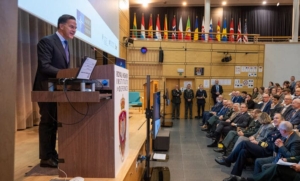Researchers unravel patterns of cancer heterogeneity
Up to recently, it was not possible for academic researchers to visualise the spatial distribution of intratumoural heterogeneity within solid tumours. An international research team has now reported a way to track changes with whole-tissue biospy phenotyping.
The researchers headed by Per Uhlén applied the optical technology of light sheets microscopy to cleared 3 D tumour tissue to gain information on tumour heterogeneity. Intratumoral heterogeneity is a critical factor when diagnosing and treating patients with cancer. Marked differences in the genetic and epigenetic backgrounds of cancer cells have been revealed by advances in genome sequencing. However, yet little is known about the phenotypic landscape and the spatial distribution of intratumoral heterogeneity within solid tumours.
The technique reported in Nature Biomedical Engineering (10.1038/s41551-017-0139-0) identifies unique patterns of phenotypic heterogeneity, in the epithelial-to-mesenchymal transition and in angiogenesis, at single-cell resolution in whole formalin-fixed paraffin-embedded (FFPE) biopsy samples, the researchers under Per Uhlén, from Swedish Karolinska Institute report. Furthermore, they demonstrated that cleared FFPE samples can be re-embedded in paraffin after examination for future use, and that their tumour-phenotyping pipeline can determine tumour stage and stratify patient prognosis from clinical samples with higher accuracy than current diagnostic methods, thus facilitating the design of more efficient cancer therapies.
The technique complements patented findings, which researchers from Roche published already in 2014. The team headed by Werner Scheuer and Steffen Strobel developed a software capable to visualise morphology, drug penetration and antiangiogenetic treatment response in cleared mouse tumours. The findings of Uhlén now add genetic information to localised tumour cells, overcoming a major disadvantage of genetic tumour profiling: the samples used to sequence tumour genomes are prepared by dissociating the tumours to form cell suspensions, thereby destroying all of the information regarding the spatial localisation of individual cells within intact solid tumours. Thus, vital environmental and spatial features of tumours, such as cell niches, vasculature and layer formations, cannot be discerned by sequencing.


 Adobe stock photos - https://european-biotechnology.com/latest-news/roche-moves-obesity-asset-ct-388-into-phase-iii/
Adobe stock photos - https://european-biotechnology.com/latest-news/roche-moves-obesity-asset-ct-388-into-phase-iii/ X-act Cologne Clinical Research GmbH
X-act Cologne Clinical Research GmbH NATO
NATO